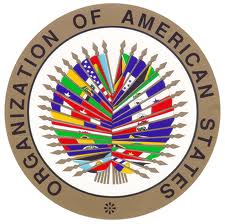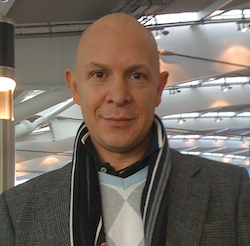The Organization of American States (OAS) has been called the UN of the Americas and it is involved in everything from food security to supercomputing. It is the prime political forum of the western hemisphere and the world’s oldest regional organization. The group’s origins date back to the First International Conference of American States, held in Washington, DC, from October 1889 to April 1890. That meeting established the International Union of American Republics. This inter-American system would eventually become the OAS in 1948.
 Today the OAS is comprised of 34 independent states of the Americas and, as Article 1 of their charter states, works toward establishing “an order of peace and justice, to promote their solidarity, to strengthen their collaboration, and to defend their sovereignty, their territorial integrity, and their independence.” The organization operates under the four pillars of human rights, democracy, multi-dimensional security and integral development.
Today the OAS is comprised of 34 independent states of the Americas and, as Article 1 of their charter states, works toward establishing “an order of peace and justice, to promote their solidarity, to strengthen their collaboration, and to defend their sovereignty, their territorial integrity, and their independence.” The organization operates under the four pillars of human rights, democracy, multi-dimensional security and integral development.
The OAS works with policy and tries to foster a better quality of life for the citizens of its member countries by promoting sustainability and horizontal collaboration. Operating under the integral development arm of the OAS is the Office of Science, Technology and Innovation, which is also guided by four main pillars: innovation, human resources, quality infrastructure, and technological development.
The Office of Science, Technology and Innovation has many partners, public and private, including government, science and technology councils, universities and national centers. All these stakeholders bring their resources to the table along with a commitment to collaborative research.
To learn more about these important endeavors, and more specifically about OAS’s involvement with the research community, we recently sat down with Mr. Jorge Duran, the Director of the OAS Office of Science, Technology and Innovation. The opportunity presented itself in September, when Duran and a few of his colleagues from the Institute for Computing in Humanities, Arts and Social Science (I-CHASS), including executive director Kevin Franklin, met in San Diego to visit with Calit2 at the University of California San Diego, the San Diego Supercomputer Center and National University.
 The OAS and partner organization I-CHASS jointly administer the Advanced Research and Technology Collaboratory for the Americas, ARTCA, an interdisciplinary, inter-institutional and international research and education endeavor. As part of its mission, ARTCA “deploys advanced Internet Communications Technology (ICT) to transcend the intellectual, institutional, and financial barriers that can impede collaborative work.”
The OAS and partner organization I-CHASS jointly administer the Advanced Research and Technology Collaboratory for the Americas, ARTCA, an interdisciplinary, inter-institutional and international research and education endeavor. As part of its mission, ARTCA “deploys advanced Internet Communications Technology (ICT) to transcend the intellectual, institutional, and financial barriers that can impede collaborative work.”
Although ARTCA was initially based in Costa Rica, the OAS Office of Science, Technology and Innovation was asked to host the program in 2010. As Duran explained, ARTCA was a great fit for the group and tied into three of the its main pillars: innovation, technological development and human resources.
OAS-ARTCA is also a main partner in the Hemispheric Scalable Research Challenge (H-SRC), which is set to debut early next year. The challenge encourages humanities-based research projects to explore the possibilities offered by advanced computational resources.
In 2009, I-CHASS launched a successful competition to donate a million CPU hours for initiatives in areas of humanities, arts and social sciences. Now, along with OAS-ARTCA and the Office of Science, Technology and Innovation of the OAS, I-CHASS is preparing to announce a second expanded round, under the H-SRC banner, to extend beyond the US borders. With the assistance of OAS-ARTCA, I-CHASS will be able to offer additional resources beyond just CPU time. The availability of diversified services should open up the competition to more varied interests and workloads. When the official call goes out in the first quarter of 2013, researchers throughout the Americas will be encouraged to apply by submitting their research proposals to I-CHASS and OAS-ARTCA. The NCSA and partner institutes are allocating between 25,000 and 500,000 CPU hours per project, and awards may also include access to visualization tools and other expertise.
Next >> Horizontal Cooperation
More and more, OAS is implementing a concept called horizontal cooperation. While countries like America and Canada are at the forefront of development, countries such as Mexico, Argentina, Brazil and Chile, as emerging economies, are showing strong growth. “There are less monies flowing from developed economies, so the developing nations have gotten together to share best practices among themselves, to where they are less dependent on foreign aid from developed economies and increasingly interdependent amongst themselves,” said Duran. As an example of horizontal cooperation, he cited the Red Clara organization, which aims to connect Latin America’s academic computer networks.
As it did with ARTCA, OAS is in the process of signing a cooperation agreement with Red Clara, the Latin American Cooperation of Advanced Networks. The project began with a grant from the European community, but that funding has since dried up, and now the local countries are stepping up to the plate. As Duran explains, they are aware of the benefits in connecting people with high-speed networks, especially for research and supercomputing applications.
Earlier this month I-CHASS was awarded $99,986 in NSF funding to support the Pan-American Advanced Studies Institute (PASI), taking place in July 2013, in Guatemala. Partner groups include the Extreme Science and Engineering Discovery Environment (XSEDE); the National Center for Supercomputing Applications (NCSA); the Advanced Visualization Lab (AVL); the Advanced Research and Technology Collaboratory for the Americas (ARTCA); the Latin American Cooperation of Advanced Networks (RedClara); and the Organization of American States (OAS).
“The objective of the PASI is to introduce young researchers across the Americas to methods in CBD [computation-based discovery] and demonstrate how it can support research involving large and or highly complex data sets generated to study large scale problems,” reported Jorge Duran in an official statement.
Another upcoming event that Duran highlighted is the Radical Innovation Summit, scheduled for next Spring in Washington, DC. The two-day summit – a collaboration between I-CHASS, the NCSA and OAS-ARTCA – will bring together representatives from Latin America, the Caribbean and the US to explore topics related to radical innovation and learning in a digital age. Last week, I-CHASS announced that it had also received NSF funding for the event.
Duran believes education and engineering are keys to creating regional independence and sustainability. “Latin America needs more engineers that can transform concepts into reality,” he stated. There are a lot of social scientists, but there’s a shortage of engineers. He mentions one university as a typical example: it graduated a thousand psychologists and only 300 engineers. Addressing this imbalance is a flagship OAS program called Engineering for the Americas. The initiative has three main aims: to improve the quality of engineering education, especially in Latin American and the Caribbean, to expand accreditation of these programs internationally and thereby increase mobility of people, and to work with the private sector and industry on job creation.
At the high-level, the OAS meets every three years for the Summit of the Americas. Leaders from all member states come together to determine new policies and objectives. The most recent event, the sixth Summit of the Americas, was held in Cartagena, Colombia, April 14-15, 2012. The central theme was “Connecting the Americas: Partners for Prosperity.” The event generated mandates to “establish hemisphere-wide road, rail, and electrical networks” and promote research and education.
“The way we work,” said Duran, “is we translate those political mandates into policies and we also translate them into concrete actions, into projects. The OAS does not embark on or undertake major projects, major infrastructure or sectoral projects; we work with countries or governments at their behest on issues that have previously been identified and try to help them in these areas, on policy or pilot projects that can then be replicated in other nations or be scaled up.
“These efforts are made to empower the regions to be more competitive at the global level. Micro-, small- and medium-sized businesses are the lifeblood of the economy and we have strong programs to integrate technology and facilitate technological applications for them so that they can become more efficient and compete in the global economy.”




























































